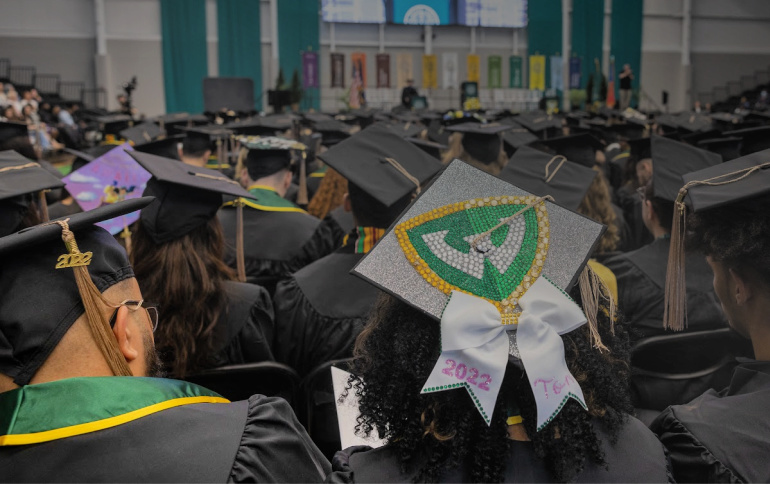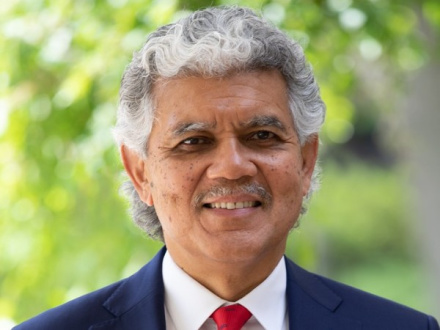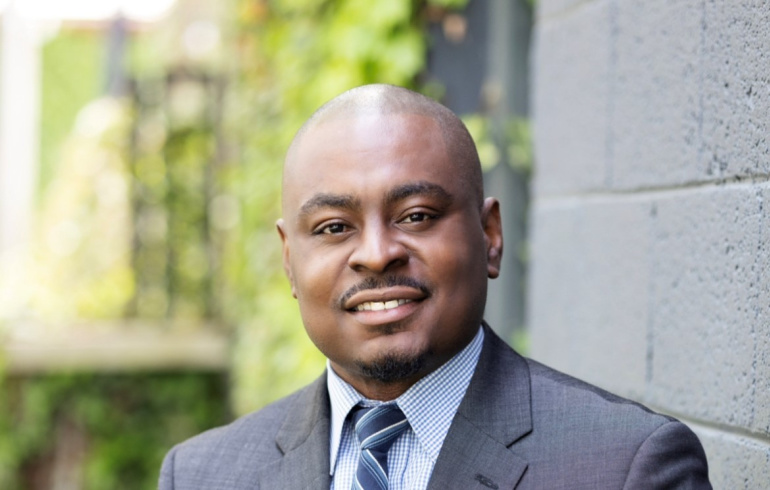
The steady, dramatic increase in Wayne State’s six-year graduation rate continues, including jumps among student groups across the board.
WSU’s new six-year graduation rate is 60.3%, an 8% increase over last year and more than double that of the low 26% rate just over a decade ago.

Gains are particularly significant this year among first-generation (27%), low-income (18%) and Hispanic students (31%).
On the heels of a big increase last year, the Black graduation rate went up another 14% this year and is now close to 40% — more than five times the rate in 2011.
“I am proud of our overall improvement and that we continue to make significant strides to close the student success equity gap among students of color,” said WSU President M. Roy Wilson. “This work takes a lot of effort and focus, but we’ve shown that it can be done.”
| Graduation Rate Gains | 2022 | One year ago | 10 years ago |
|---|---|---|---|
| Overall | 60.3% | 55.8% | 27.6% |
| Black Students | 39.5% | 34.6% | 9.2% |
| Hispanic/Latinx Students | 50.3% | 38.4% | 22.1% |
| White Students | 64.0% | 59.6% | 37.7.% |
| First Gen Students | 57.7% | 45.4% | 18.4% |
| Low Income Students | 55.6% | 47.3% | 18.7% |
Darryl Gardner, senior director of academic student affairs in the Office of the Provost, said the ongoing success is the result of a change in culture initiated and supported by Wilson to one in which every single student matters.
“This shift has transformed the student experience at Wayne State and led to the university becoming one of the most rapidly improving large public universities in the nation,” said Gardner. “I think it really speaks to the collective hard work of the entire campus.”

Gardner said no single initiative can be credited; rather, student success operations have improved steadily each year across the board. It began in 2011, with a $10 million investment that allowed for the hiring of 45 additional academic advisors, improving curriculum in general education courses, increasing support for faculty teaching development, bolstering support for underprepared students, establishing first-year experiences for new students and strengthening financial aid.
In 2018, the Association of Public and Land-grant Universities (APLU) named Wayne State University the winner of its Project Degree Completion Award, honoring its dramatic graduation rate improvement and innovative strategies and programs to increase retention and decrease achievement gaps.
To remain national leaders, in 2019, under the leadership of Associate Provost for Student Success Monica Brockmeyer, the Student Success Operational Excellence (SSOE) office was developed to provide the concentrated effort required to inspire the next wave of innovation and deepen collaboration campuswide.
SSOE initiatives have included deepening and facilitating collaboration with all student success stakeholders across campus, deepening the role of faculty with regard to undergraduate student success, and expanding the use of data and predictive analytics to offer more proactive support to students.
“We've improved our progress monitoring system so that we can offer students more real-time and just-in-time support, so we're staging interventions more proactively for students versus reactively,” said Gardner.
Gardner said faculty have also played a major role in several ways, including innovative pedagogical practices being implemented in the classroom. Faculty have also reinvigorated and taken the lead on the Undergraduate Research Opportunities Program (UROP), which allows students from disciplines across the university to participate in research under the mentorship of faculty members who are leaders in their field.
When the pandemic hit in March 2020, a Student Success Collaborative was quickly formed and managed by the SSOE team to transition many academic support programs and academic advisors to the remote and online environment. Six working groups were created and eventually 25 action teams were launched to work on critical problems facing students. This included teams helping students reach graduation and one looking specifically at policies through an equity lens that could disproportionately impact specific student groups.
In all, more than 150 people across the university engaged in the project and found the approach so effective and rewarding that they were built into student success initiatives moving forward.
“After more than a decade of improving graduation rates, continuing the upward trajectory — particularly with the difficulties brought on by the pandemic — is a challenge, but the success of our students remains our highest priority,” said Mark Kornbluh, provost and senior vice president for academic affairs.
